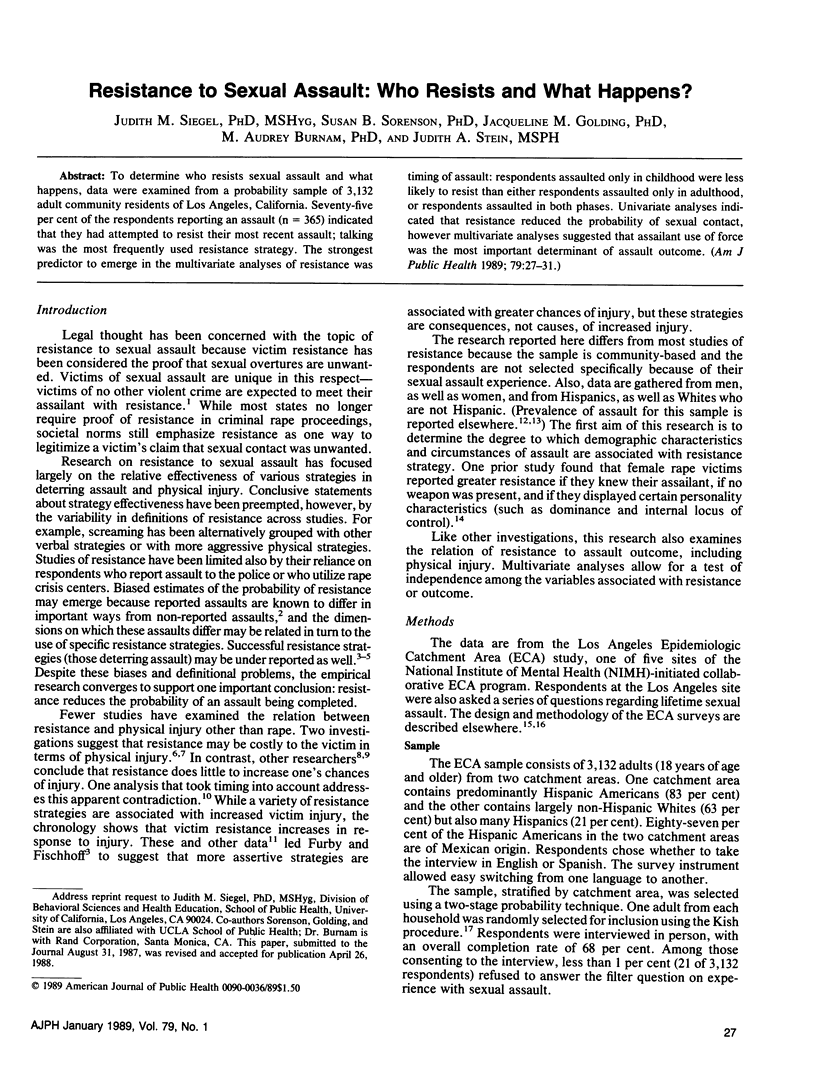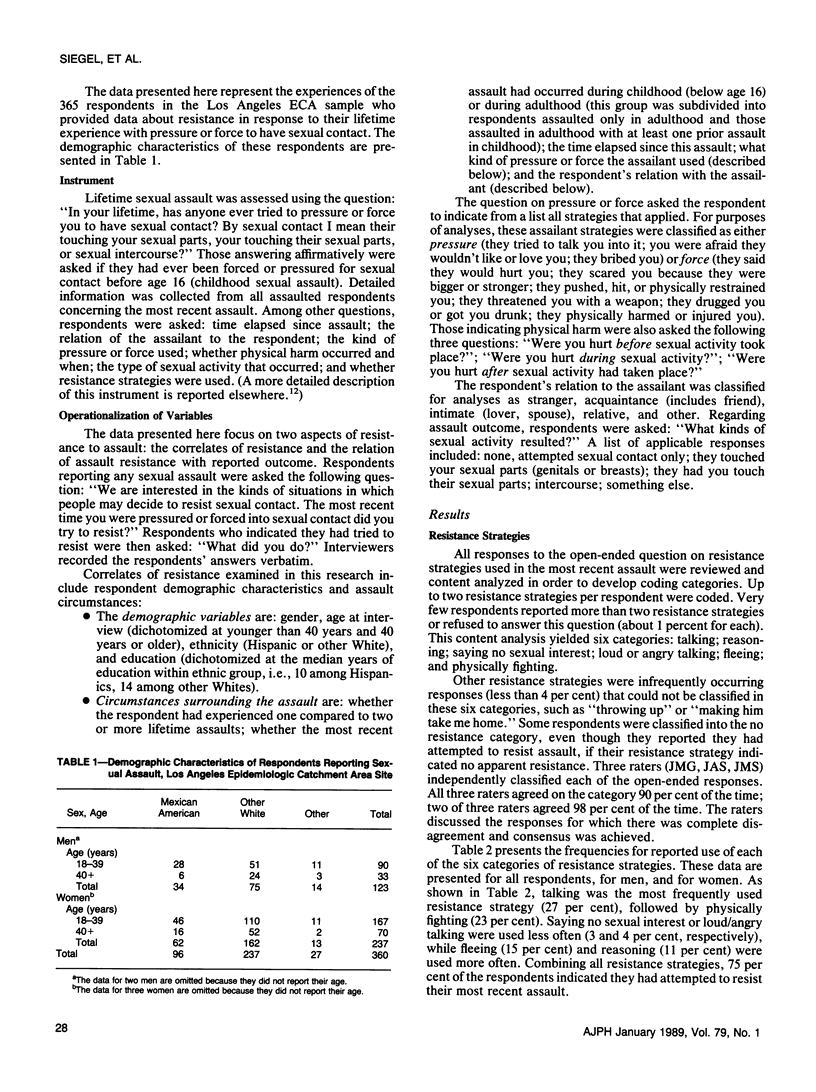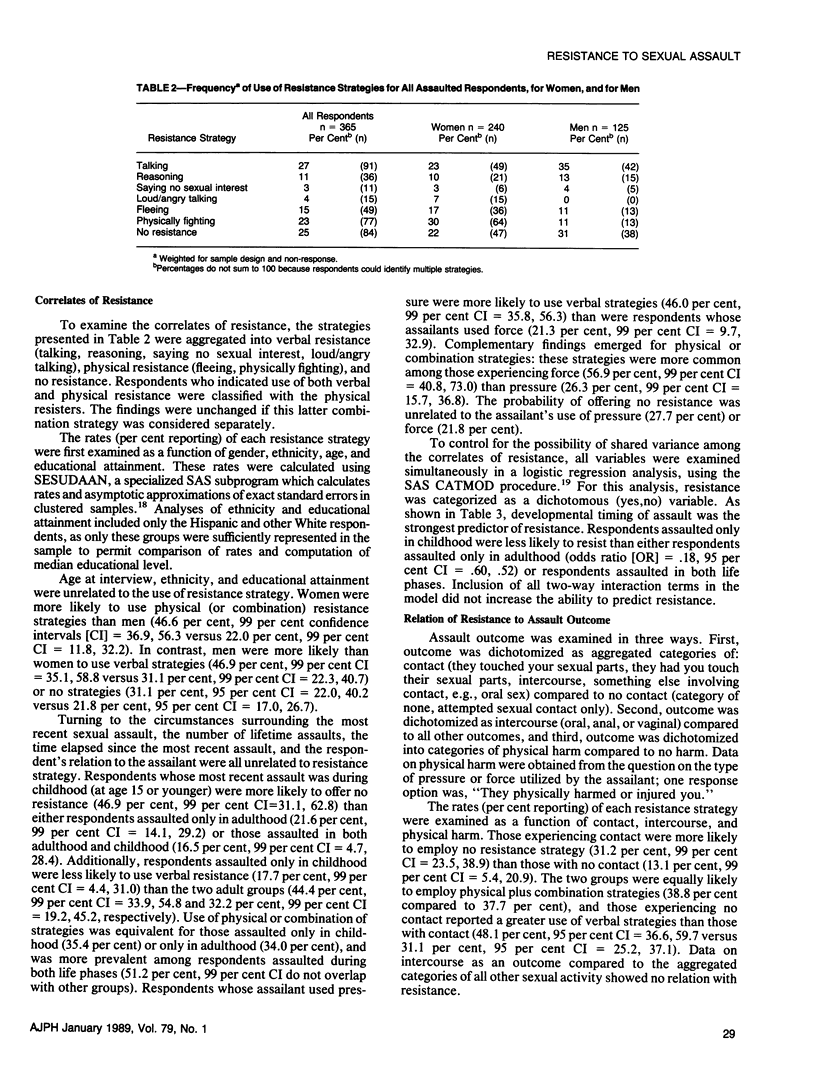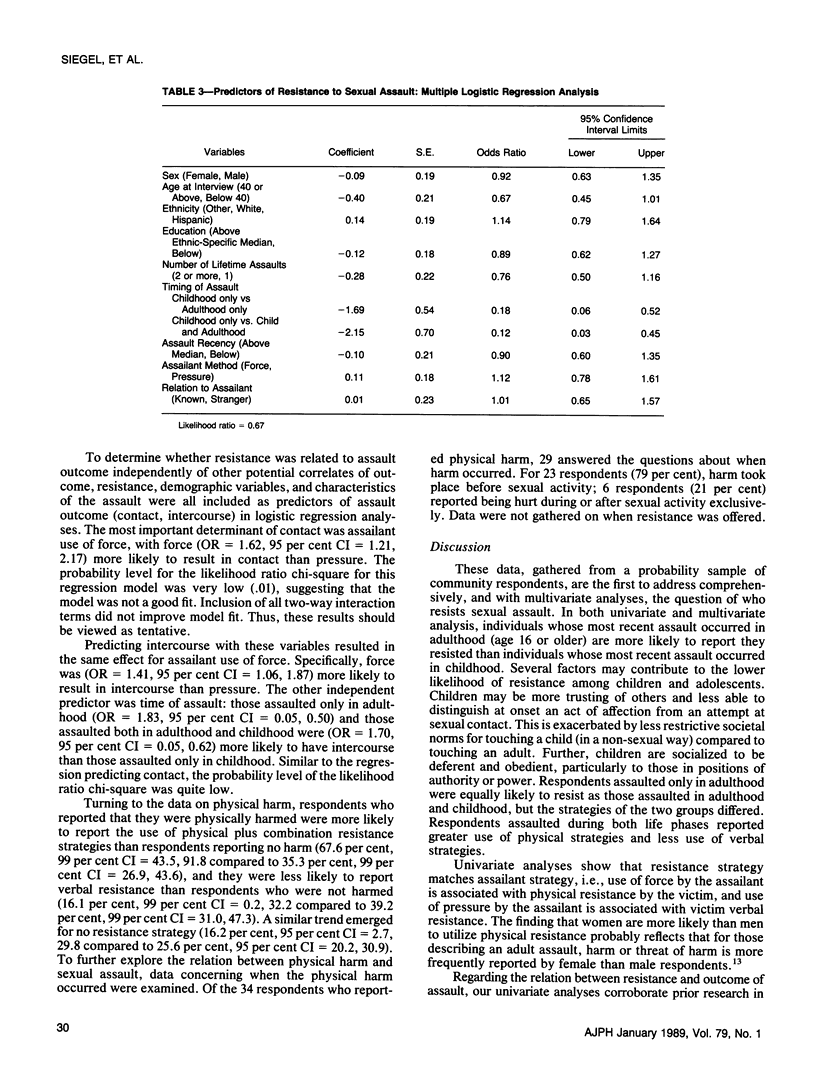Abstract
To determine who resists sexual assault and what happens, data were examined from a probability sample of 3,132 adult community residents of Los Angeles, California. Seventy-five per cent of the respondents reporting an assault (n = 365) indicated that they had attempted to resist their most recent assault; talking was the most frequently used resistance strategy. The strongest predictor to emerge in the multivariate analyses of resistance was timing of assault: respondents assaulted only in childhood were less likely to resist than either respondents assaulted only in adulthood, or respondents assaulted in both phases. Univariate analyses indicated that resistance reduced the probability of sexual contact, however multivariate analyses suggested that assailant use of force was the most important determinant of assault outcome.
Full text
PDF




Selected References
These references are in PubMed. This may not be the complete list of references from this article.
- Burnett R. C., Templer D. I., Barker P. C. Personality variables and circumstances of sexual assault predictive of a woman's resistance. Arch Sex Behav. 1985 Apr;14(2):183–188. doi: 10.1007/BF01541662. [DOI] [PubMed] [Google Scholar]
- Regier D. A., Myers J. K., Kramer M., Robins L. N., Blazer D. G., Hough R. L., Eaton W. W., Locke B. Z. The NIMH Epidemiologic Catchment Area program. Historical context, major objectives, and study population characteristics. Arch Gen Psychiatry. 1984 Oct;41(10):934–941. doi: 10.1001/archpsyc.1984.01790210016003. [DOI] [PubMed] [Google Scholar]
- Siegel J. M., Sorenson S. B., Golding J. M., Burnam M. A., Stein J. A. The prevalence of childhood sexual assault. The Los Angeles Epidemiologic Catchment Area Project. Am J Epidemiol. 1987 Dec;126(6):1141–1153. doi: 10.1093/oxfordjournals.aje.a114752. [DOI] [PubMed] [Google Scholar]
- Sorenson S. B., Stein J. A., Siegel J. M., Golding J. M., Burnam M. A. The prevalence of adult sexual assault. The Los Angeles Epidemiologic Catchment Area Project. Am J Epidemiol. 1987 Dec;126(6):1154–1164. doi: 10.1093/oxfordjournals.aje.a114753. [DOI] [PubMed] [Google Scholar]


